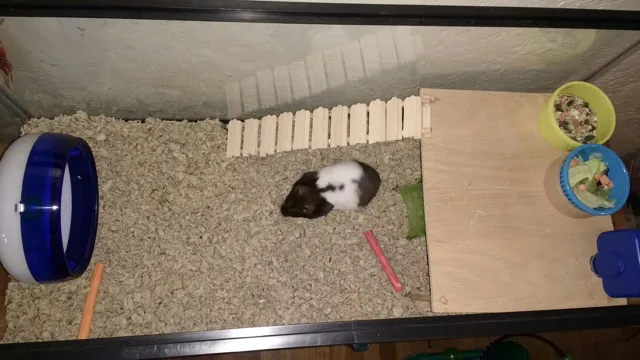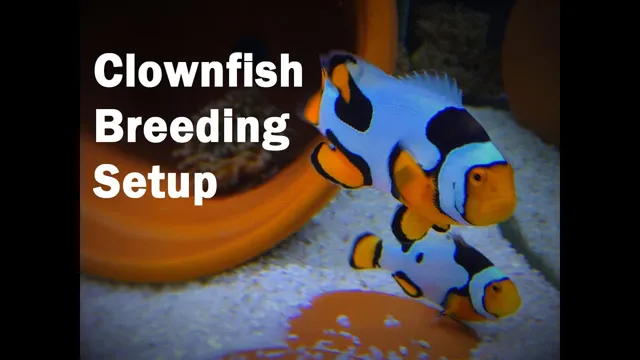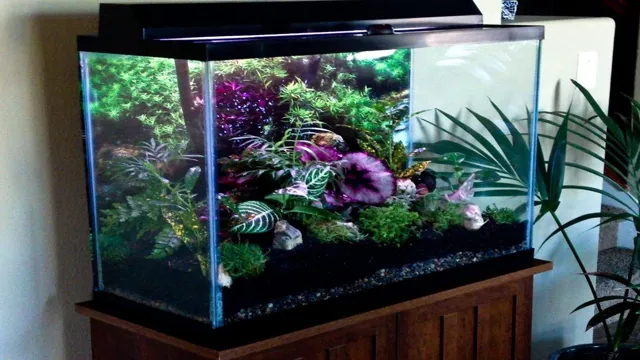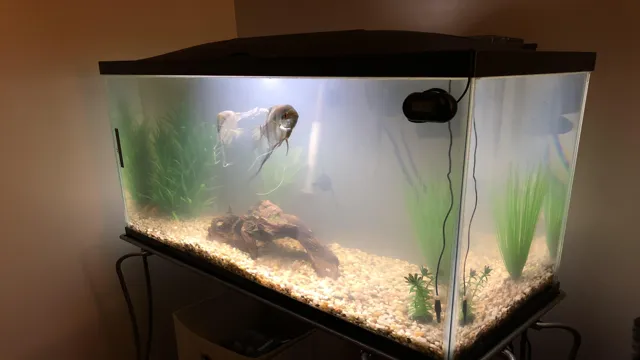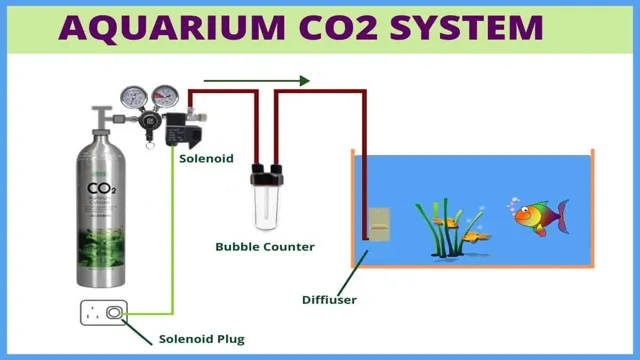Are you a fish enthusiast who’s excited to set up a new aquarium? Or perhaps you’ve got a tank already, and you’re planning to add some new fishy friends to the mix? Whatever the case, it’s crucial to make sure your aquarium cycle is in full swing before you introduce any fish. But what exactly is an aquarium cycle, and why is it important? In a nutshell, the cycle is the process by which beneficial bacteria grow and establish themselves in your tank, converting harmful ammonia from fish waste into nitrite and then nitrate. This process can take weeks, but fortunately, there’s a way to accelerate it.
In this quick guide, we’ll show you the steps you need to take to speed up your aquarium cycle and get your tank in tip-top shape for your finned friends.
Understanding the Aquarium Cycle
If you’re starting a new aquarium, it can be challenging to understand the aquarium cycle. The cycle is the process by which beneficial bacteria colonize your tank and convert fish waste into less harmful compounds. To accelerate the aquarium cycle, you need to introduce beneficial bacteria to your tank.
One way to do this is to use a bacterial supplement. These supplements contain live bacteria that will quickly colonize your tank. Another way is to add a small number of hardy fish to your tank to kick-start the process.
However, it’s important to remember that the cycle takes time, and you’ll need to monitor your tank’s water parameters regularly. By understanding the aquarium cycle and how to accelerate it, you can ensure a healthy and thriving aquarium for your fish.
The Nitrogen Cycle
The nitrogen cycle is an essential process in maintaining a healthy aquarium ecosystem. It involves the transformation of ammonia, which is toxic to fish and other aquatic organisms, into nitrite and then into nitrate. The first step of the cycle is performed by beneficial bacteria that naturally colonize the aquarium.
This bacteria transforms ammonia into nitrite, which is still harmful to fish but less toxic than ammonia. Finally, another type of bacteria convert nitrite into nitrate, which is less harmful to fish but can cause algae blooms if not monitored properly through regular water testing and partial water changes. Understanding the nitrogen cycle is crucial to creating a stable and thriving aquarium environment, as it ensures that toxins are properly converted and removed.
By establishing a healthy cycle through proper cycling, testing, and maintenance, aquatic enthusiasts can enjoy a beautiful and thriving aquarium.
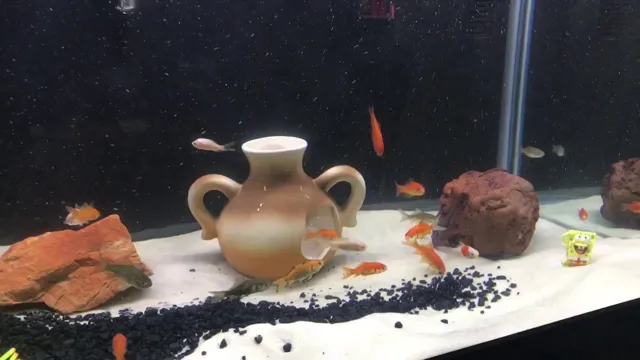
Why Accelerate the Cycle?
Accelerate the Cycle If you’re new to the aquarium hobby, you might be wondering what the aquarium cycle is and why it’s so important. Put simply, the aquarium cycle refers to the process of establishing beneficial bacteria inside your tank that break down harmful toxins produced by fish waste and uneaten food. These bacteria take time to establish naturally, but there are ways to accelerate the cycle by introducing beneficial bacteria from other sources like established aquariums or commercial bacteria supplements.
Accelerating the cycle is important because it can help prevent fish deaths or illnesses caused by toxic ammonia and nitrite levels in the water. By understanding and actively managing the aquarium cycle, you can ensure a healthy and thriving aquatic environment for your beloved fish.
Ways to Accelerate the Aquarium Cycle
Accelerating the aquarium cycle can be done in several ways. One of the most popular methods is using beneficial bacteria. This method involves introducing live bacteria to the tank which breaks down the harmful substances produced by fish.
Another way to speed up the aquarium cycle is by increasing the temperature of the water. Warmer water supports the growth of beneficial bacteria, which accelerates the cycle. Providing proper aeration also helps by increasing oxygen levels in the water, which leads to faster establishment of beneficial bacteria. (See Also: How to Get Rid of Aquarium Snails Humanely: A Comprehensive Guide)
Adding certain plants and decorations can aid in the process too, as they provide surfaces for the beneficial bacteria to attach to. However, it is important to note that proper monitoring of the water parameters during this period is crucial for the health and safety of the fish. With these techniques, you can accelerate the aquarium cycle and enjoy a healthy and thriving aquatic environment for your fish.
Seeding the Tank
Seeding the Tank: Ways to Accelerate the Aquarium Cycle Have you recently set up an aquarium? If so, you may be aware that a new tank can take several weeks or even months to cycle fully. During this period, beneficial bacteria colonize the aquarium, converting toxins into less harmful compounds, and creating a stable environment for aquatic life. However, there are ways to speed up the cycling process, and one of those is seeding the tank.
Seeding involves introducing beneficial bacteria to jump-start the colonization process. You can do this in several ways, such as using seeded filter media or adding bacteria supplements. Seeded filter media can come from an established tank or even a local fish store, where they sell packs of pre-seeded media.
Bacteria supplements add live cultures to your aquarium that kickstart the cycle and help to establish a bacterial colony. In conclusion, seeding the tank can be a great way to accelerate the aquarium cycle and provide a healthier environment for your aquatic pets.
Adding Ammonia
One of the key ways to accelerate the aquarium cycle is to add ammonia to your tank. Ammonia is essential for the growth of beneficial bacteria, which will help to break down waste and keep the water clean. There are a few ways to include ammonia in your aquarium setup.
One method is to add fish food or fish waste to the water, as this will produce ammonia as it decays. Another option is to use a pure ammonia solution, which can be added in small amounts over time. Whichever method you choose, it is important to monitor the ammonia levels in the water with a test kit to ensure that they do not get too high and harm your fish.
With a healthy population of bacteria in your tank, you’ll be able to keep your aquatic friends happy and healthy!
Using Beneficial Bacteria
Using beneficial bacteria is a smart way to accelerate the aquarium cycle. One way to do this is by using a live bacterial product that contains Nitrosomonas and Nitrobacter bacteria, among others. These bacteria help break down the toxic ammonia and nitrite in the tank and convert them into less harmful nitrates.
Adding this type of bacteria to your tank can speed up the cycling process and reduce the risk of fish loss due to high ammonia and nitrite levels. Another way to boost beneficial bacteria is by using aquarium substrate that contains live bacteria. This substrate can help establish a bacterial colony that will aid in the nitrogen cycle.
By introducing beneficial bacteria, you can have a clean and healthy aquarium for your fish to thrive in.
Lowering pH Levels
Lowering pH levels in an aquarium can be crucial for the survival and health of your aquatic plants and animals. There are several ways to lower pH levels in your aquarium, but one of the best methods is to use natural means. One effective way is to use peat moss, which contains humic substances that can help to reduce pH levels.
Another way is to add driftwood to your aquarium, as it can release tannins that help to lower pH. Using reverse osmosis (RO) water can also help to lower pH levels, as it has a lower carbonate hardness than tap water. Finally, using pH-lowering chemicals such as citric acid can be an effective method, but it should be used with caution as it can harm your aquarium inhabitants if used excessively. (See Also: How to Get Rid of Bubbles in Aquarium: Tips and Tricks for Clear Water)
By using these natural methods, you can safely and effectively lower your aquarium’s pH levels to ensure the health of your aquatic plants and animals.
Tips to Maintain and Monitor the Cycle
If you’re wondering how to accelerate aquarium cycle, there are a few tips that can help you maintain and monitor the cycle effectively. First, make sure to test the water regularly to ensure the levels are stable. Any spikes in ammonia or nitrite can be harmful to your fish and slow down the cycling process.
If you notice any changes in water parameters, perform a water change to keep the levels in check. Additionally, adding beneficial bacteria supplements and live plants can help speed up the cycle. The bacteria supplements contain nitrifying bacteria that convert harmful ammonia and nitrite to nitrate, which is then removed through water changes.
Live plants also help absorb nitrogen compounds and provide a natural environment for your fish. Finally, be patient! The cycling process can take anywhere from 4 to 8 weeks to complete, so don’t rush it. Following these tips will help you maintain a healthy and stable aquarium environment for your fish.
Regular Water Changes
When it comes to maintaining a healthy aquarium for your fish, regular water changes are essential. These changes help remove excess nutrients and waste, keeping the water clean and safe for your fish. A good rule of thumb is to change about 10-15% of the water every week, but this can vary depending on the size of your tank and the number of fish you have.
It’s also important to monitor the water parameters regularly to ensure everything is in balance. Testing kits can be purchased to test for pH levels, ammonia, nitrite, and nitrate levels. By keeping up with routine water changes and monitoring the water parameters, you can help ensure a healthy and thriving aquatic environment for your fish.
So next time you’re wondering about the best way to care for your aquarium, remember the importance of regular water changes!
Testing Water Parameters
Maintaining and monitoring the water cycle in your aquarium is crucial for the health and longevity of your fish. To ensure optimal water quality, it’s important to regularly test and monitor various water parameters such as pH, ammonia, nitrite, and nitrate levels. There are several testing kits available in the market that can help you easily measure and track these parameters.
You can also consider using a water monitoring system that provides real-time data on the water quality in your tank. One of the most important things to keep in mind while testing water parameters is to avoid overfeeding your fish. Overfeeding can lead to an increase in waste and excess food in the tank, which can cause high levels of ammonia and nitrite.
Additionally, make sure to regularly clean your aquarium and replace the filter media to prevent the buildup of harmful chemicals and debris. Another important tip for maintaining a healthy water cycle is to supplement beneficial bacteria in the tank. Beneficial bacteria help break down fish waste and convert harmful compounds into less harmful byproducts.
You can add beneficial bacteria through specially formulated supplements or by adding a piece of media from an established tank. In conclusion, maintaining and monitoring the water cycle in your aquarium is crucial for the health and longevity of your fish. By regularly testing water parameters, avoiding overfeeding, cleaning the tank and supplementing beneficial bacteria, you can ensure a healthy and thriving aquatic environment for your fish. (See Also: How to Add Fish to an Aquarium Quieter: Tips and Tricks for a Peaceful Environment)
Conclusion
In short, accelerating the aquarium cycle is like speeding down a highway – the faster you go, the quicker you’ll reach your destination. So, if you want to bring your fishy friends home faster, jumpstart the cycle by adding bio-boosters, ramping up aeration, and maintaining regularly. And remember, patience is a virtue – but a cycled aquarium is a joy forever!”
FAQs
What is an aquarium cycle and why is it important?
An aquarium cycle refers to the process of establishing beneficial bacteria in a new aquarium tank. It is important because these bacteria help to break down waste and toxic compounds in the tank, ensuring a healthy environment for fish and other aquatic organisms.
How long does it take for an aquarium cycle to complete?
The length of the aquarium cycle can vary depending on several factors, such as the size of the tank, number of fish, and the effectiveness of the filtration system. Typically, it takes 4-6 weeks for the cycle to complete.
Can you accelerate the aquarium cycle process?
Yes, there are a few methods to speed up the aquarium cycle process. One way is to introduce beneficial bacteria from an established tank into the new tank. Another way is to add small amounts of fish food or ammonia to the tank to feed the bacteria.
How often should you test the water during the aquarium cycle?
It is recommended to test the water in the new tank every few days during the aquarium cycle. This will ensure that the water parameters are stable and safe for fish.
What are the signs of a successful aquarium cycle?
A successful aquarium cycle can be indicated by ammonia and nitrite levels dropping to zero, and nitrate levels rising. Additionally, the water in the tank should be clear and free of cloudiness.
What can happen if you add fish to a new tank before the aquarium cycle is complete?
Adding fish to a new tank before the aquarium cycle is complete can result in high levels of ammonia and nitrite, which can be toxic to fish and other aquatic organisms. This can cause stress, illness, and even death in fish.
How can you maintain a healthy aquarium environment after the cycle is complete?
Maintaining a healthy aquarium environment involves regular water changes, monitoring water parameters, feeding fish appropriately, and cleaning the tank and filter regularly. Additionally, avoiding overstocking the tank and introducing new fish slowly can help prevent issues in the future.


